All products featured are independently chosen by us. However, SoundGuys may receive a commission on orders placed through its retail links. See our ethics statement.
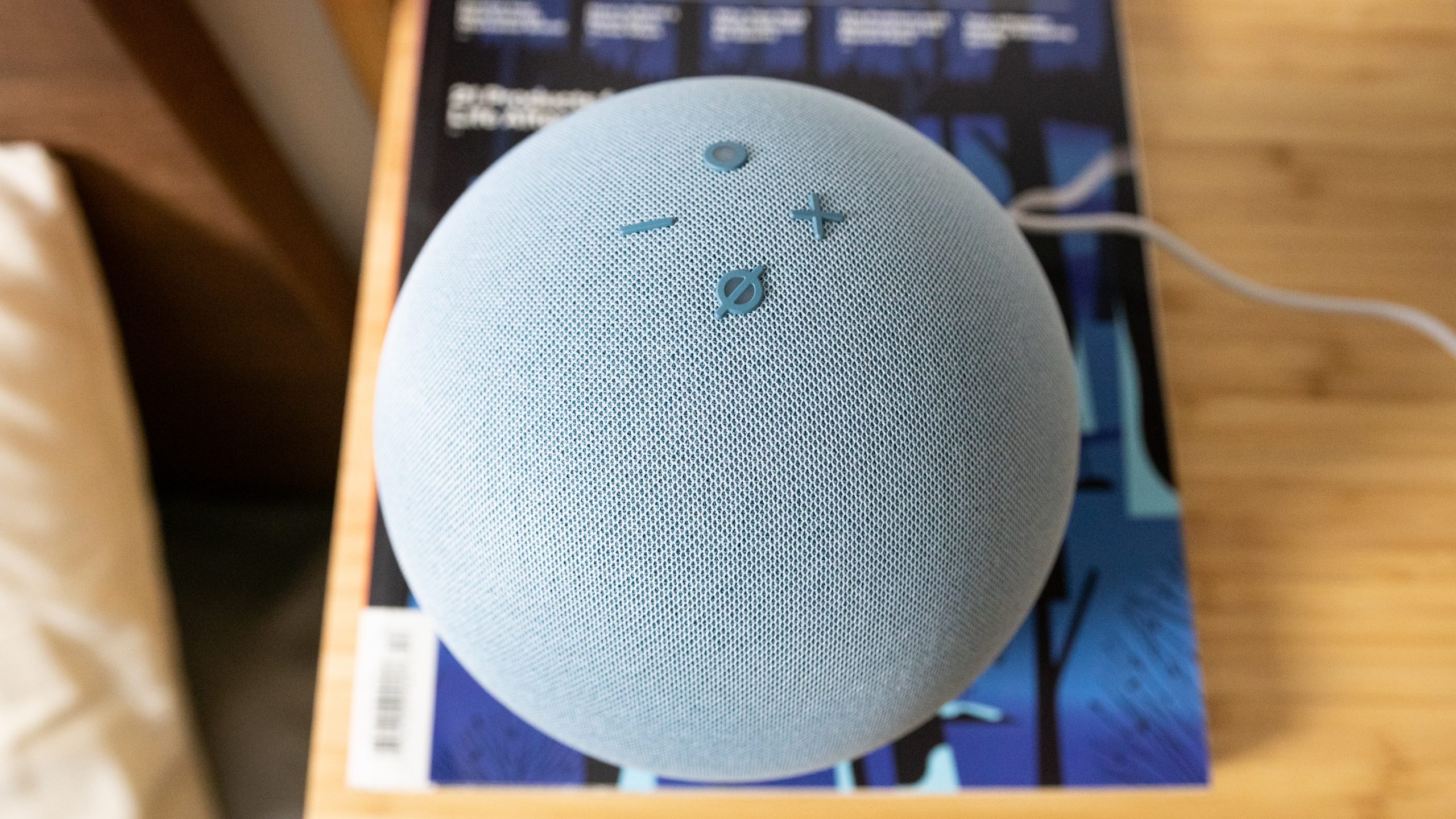
Amazon Echo (4th Gen) review
Published onJuly 17, 2024
Amazon Echo (4th Gen)
The Amazon Echo was a hit when it was first released and the company improves the Echo line with every iteration—but it’s been six whole years since the Echo’s debut. So why are we still talking about it? The Amazon Echo (4th Gen) is the newest smart speaker from the company, and it hopes you’ll make it the center of your smart home. While the functionality of Alexa hasn’t changed much, the shape and sound quality have definitely improved.
We spent a week with the Echo (4th Gen) to find out if this Amazon smart speaker is will fit into your life.
Editor’s note: This Amazon Echo (4th Gen) review was updated on July 17, 2024, to discuss the Amazon Echo Pop as an alternative.
People already invested in the Amazon Alexa ecosystem should upgrade to the new Echo. If you have any Ring or Zigbee compatible devices, then it will work fine with this speaker. Anyone that wants a medium-sized speaker with strong bass will enjoy this compact sphere. This isn’t the only new smart speaker around, but if you want a stronger bass this is a solid option.
What is the Amazon Echo (4th Gen)?
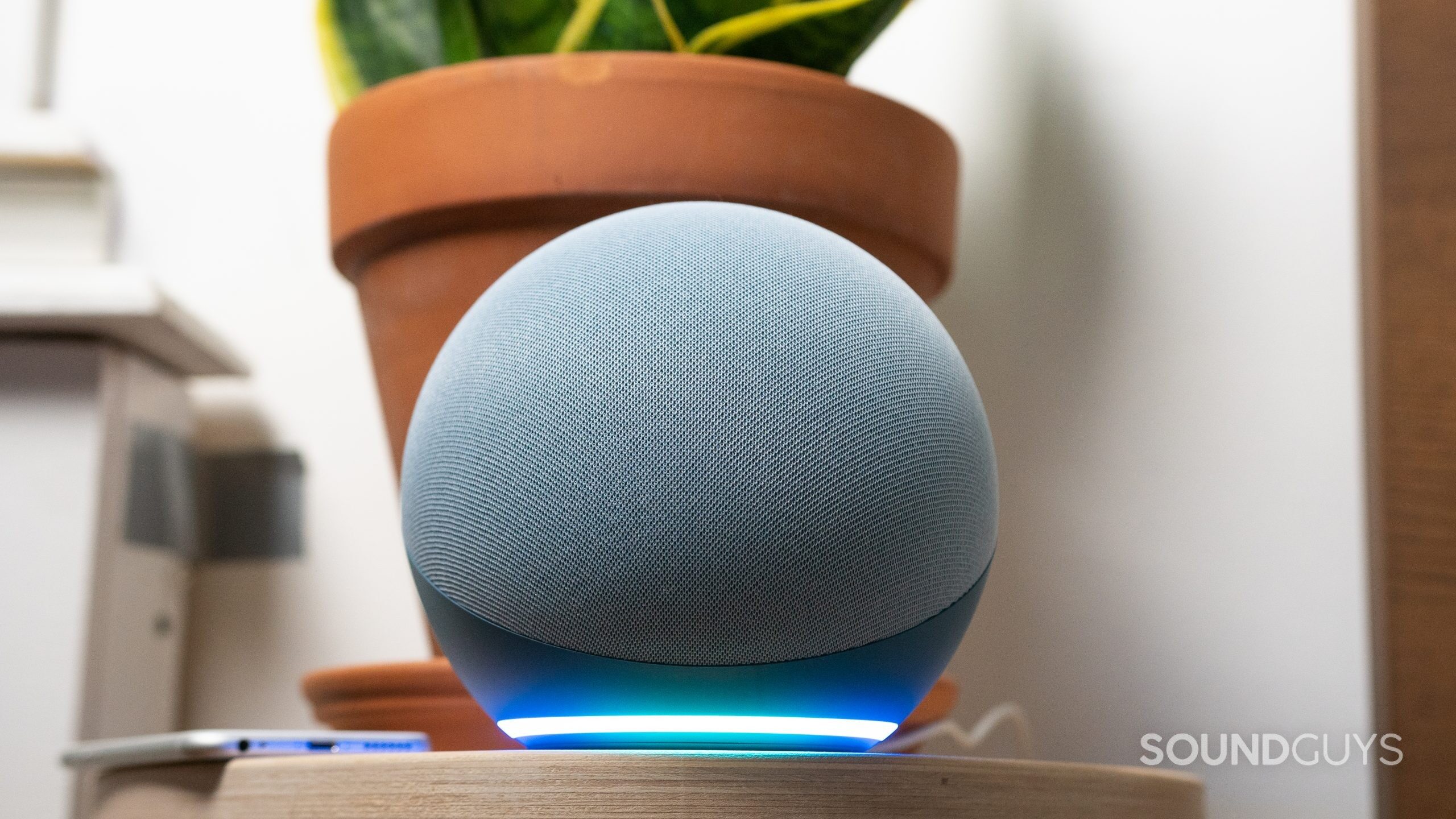
The Amazon Echo (4th Gen) is, well, the fourth generation of its popular smart speaker. The original Echo looked like a large soda can, but every model has been progressively more refined (and round) since then. The third-generation Echo was a small, doughy-looking speaker that was more smart home device than it was speaker. That changes with the Amazon Echo (4th Gen) speaker, designed to be a decent sounding speaker. While it’s larger and rounder than the previous generation it’s still the same Alexa speaker that so many people enjoy.
The speaker itself weighs 986g and is a large sphere wrapped in a nice fabric. The design and build of the speaker are probably one of my favorite parts of the speaker. Its orb shape makes it fairly unique among the selection of smart speakers. The circular shape limits the spaces that you can comfortably fit it in, but once you find a good spot, it’ll blend right in.
Alongside this particular model Amazon also released a new Echo Dot which shares the new round design and is just a smaller version of the one in this review. Then there’s the Echo Dot with a clock that you can pick up or the Echo Dot kids edition, which comes in either a panda or a tiger design.
Do you need the Alexa app to use the Echo 4th Gen?
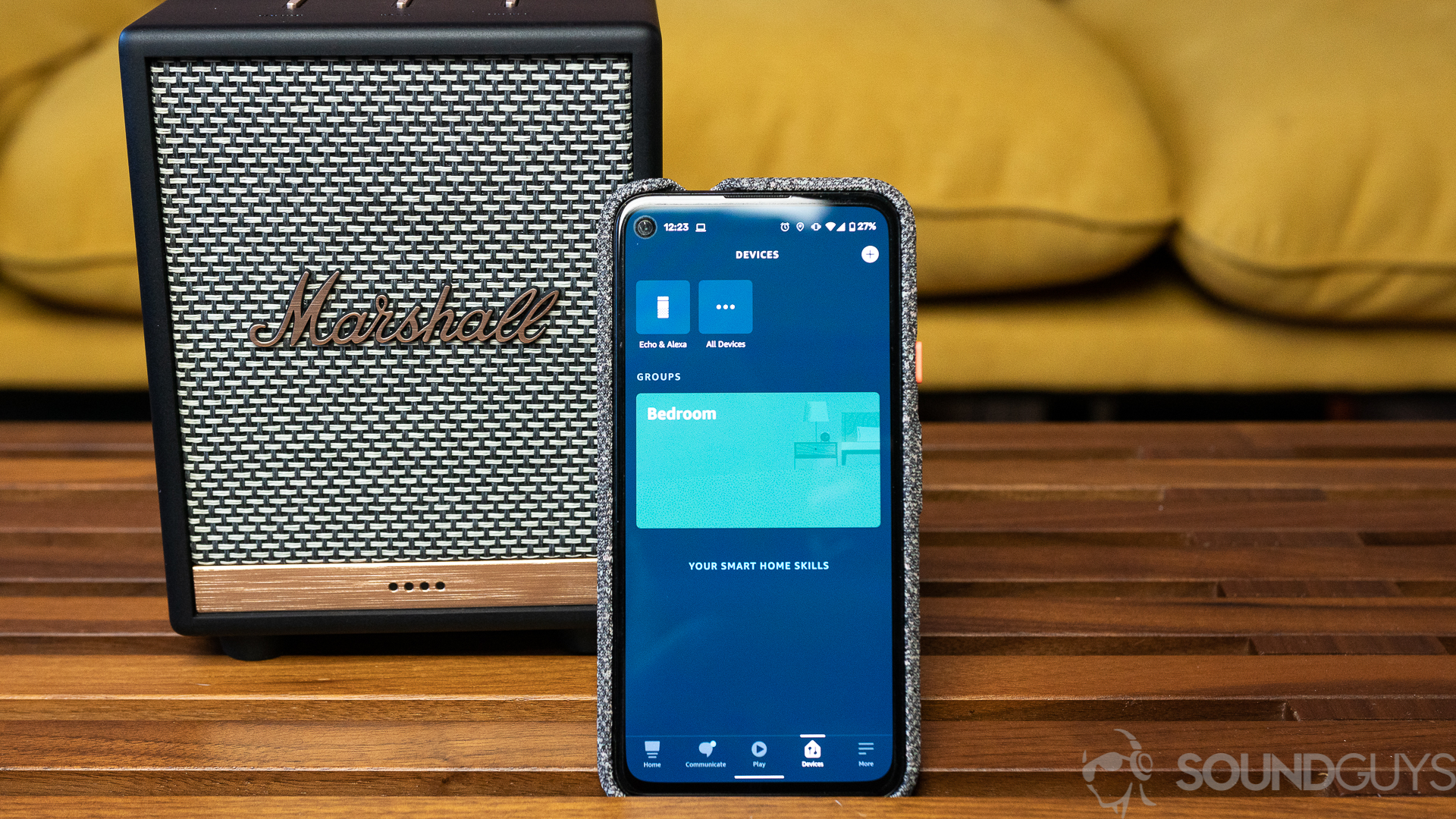
Even though this is a smart speaker with a voice assistant you’ll likely be using the app to get a lot done as it lets you control almost everything. Not to mention that you need it for the initial setup process. The app lets you control volume, pair devices via Bluetooth, add a second speaker or subwoofer, set up multi-room groups, set alarms, select whether you’re using the aux as an input or an output, and plenty more. You can also download more Alexa skills to give your speaker even more functionality.
Pro tip: Turn on “Follow-up Mode” in device settings. This way, after you ask Alexa a question, it will answer and then automatically listen to see if you have a follow-up question. This feature bypasses the wake word requirement.
What’s it like to use the Amazon Echo (4th Gen)?
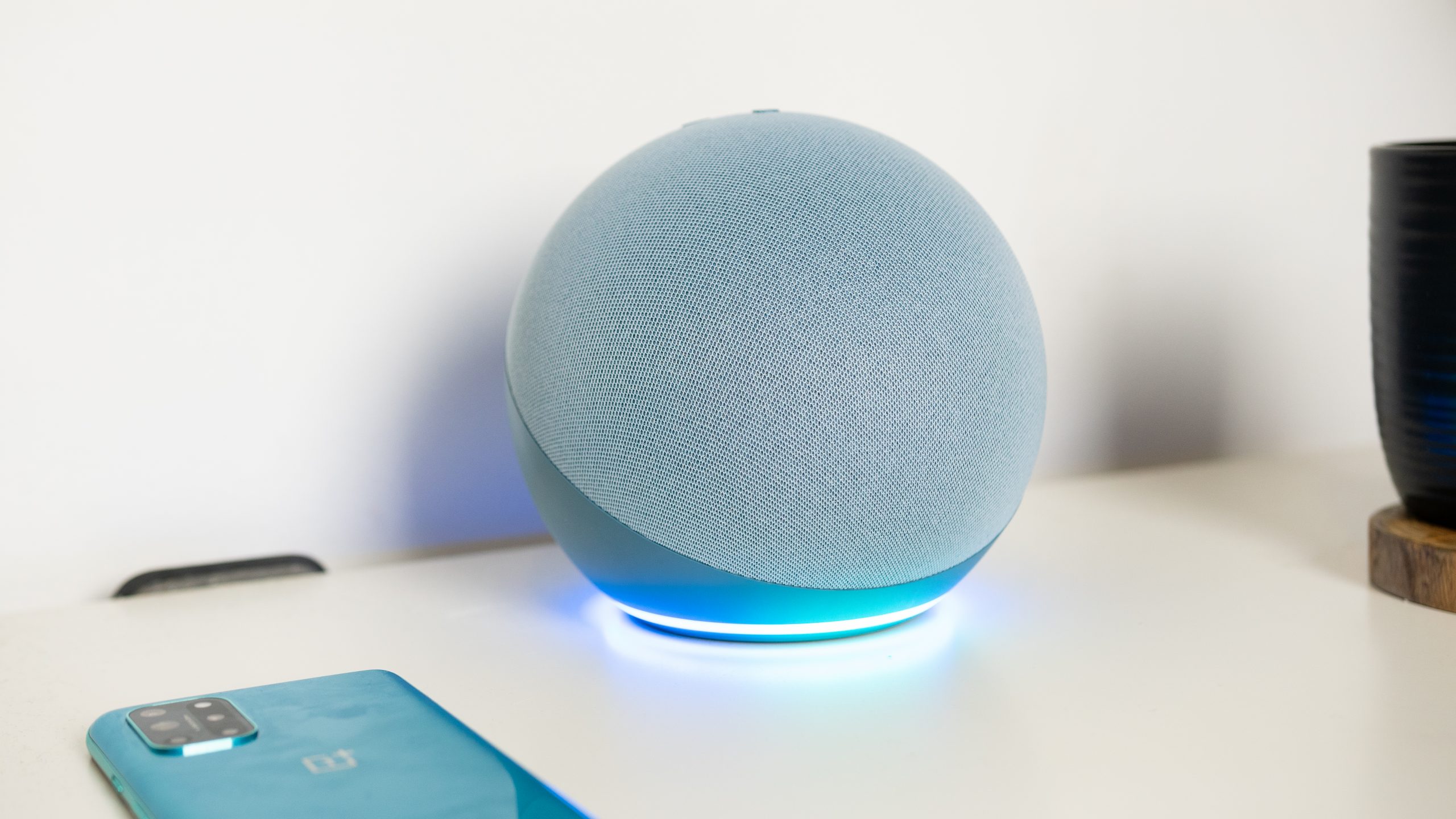
With Alexa, you can do everything from controlling compatible smart home devices to asking it questions about the weather, when connected to the Alexa app. I can play and control music directly from the speaker just by asking Alexa. If you’d rather not use Alexa, there are buttons built into the speaker’s top for playback. You’ll get the action button, a mute button, and two volume buttons as well.
If you’re a fan of Google Chromecast or YouTube, using either with the Echo is a process that requires skills (the equivalent of apps for Alexa) to make the process possible. The process is even murkier with YouTube and YouTube Music, my streaming services of choice. Thankfully, Spotify works which is good news for anyone who doesn’t want to use Amazon Music HD as their main streaming service. The Echo (4th Gen) is also compatible with Apple Music, Apple Podcasts, Pandora, Deezer, SiriusXM, Tidal, and Vevo.
Skills are the equivalent of apps for Alexa.
If you prefer not to use your voice, the Echo (4th Gen) has Spotify Connect built-in so that you can play music directly from the Spotify app without needing to use Alexa at all. This is useful when I mute the mic but still want to listen to music. The Echo (4th Gen) also has Bluetooth 5.0, so you can use it like a normal Bluetooth speaker as well if your source device can’t connect to Wi-Fi.
How do you connect to the Amazon Echo (4th Gen)?
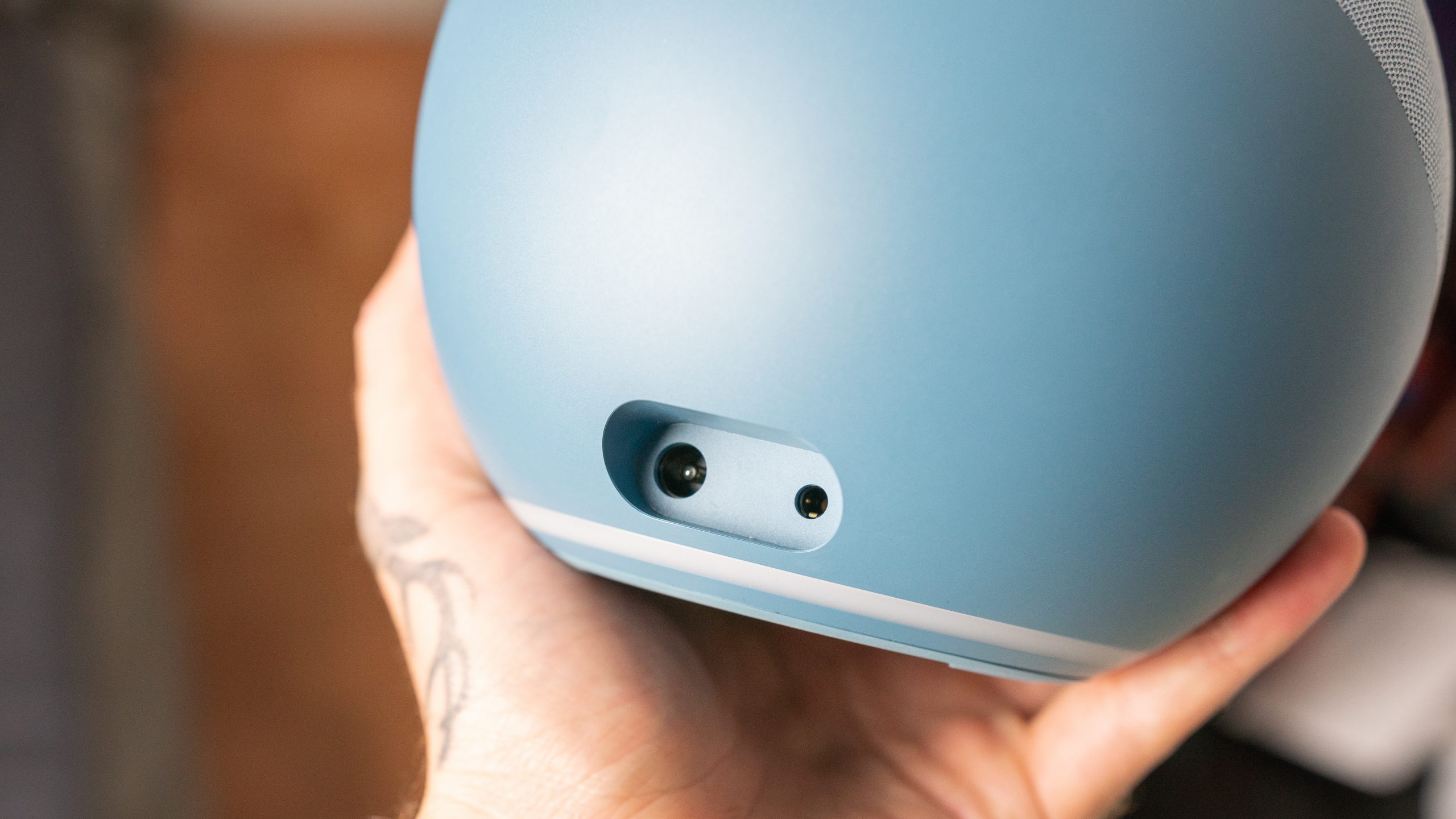
Connecting to play music on the Echo (4th Gen) is easy. All you need to do is take it out of the box, plug it into an outlet, and follow the instructions in the Alexa app that’s available on both iOS and Android. Once you’ve connected it to your Wi-Fi you have access to the Alexa personal assistant.
An LED ring along the bottom lights up blue when you activate Alexa, providing you with immediate feedback as to whether the speaker registered your voice. On the back of the speaker, you’ll find the power input and an aux input. A threaded universal mount on the base will come in handy if you plan to add this to an existing speaker setup.

If you’re trying to connect any smart home appliances, the process is a little more involved. Just follow these steps:
- Open the Amazon Alexa app.
- Click on the Devices tab on the bottom row.
- Click on the + icon on the top right and select “Add Device.”
- Select the kind of device you’re trying to connect to.
- Follow the instructions.
How do you charge the Amazon Echo (4th Gen)?
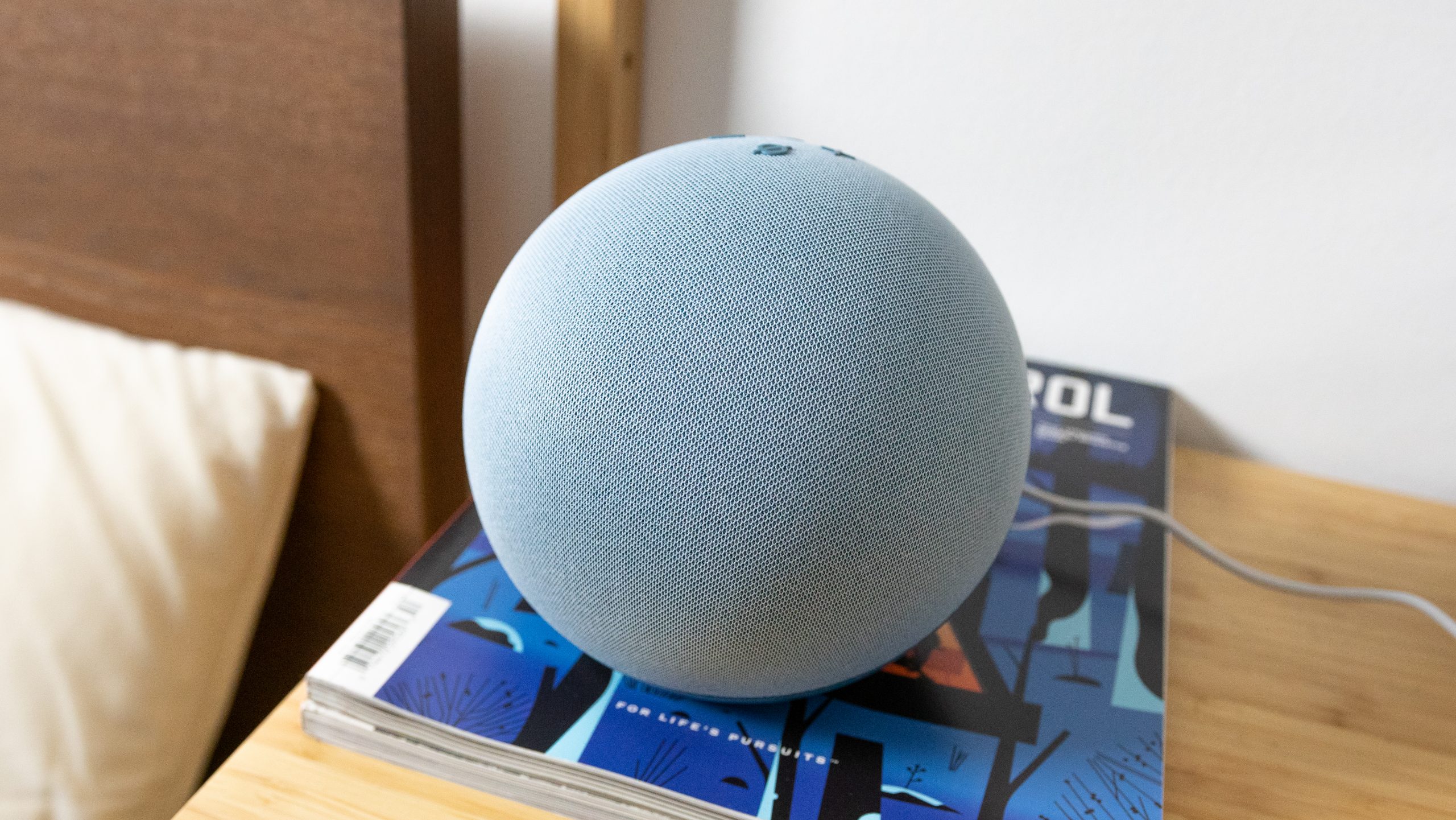
You don’t! Despite having Bluetooth 5.0, the Amazon Echo (4th Gen) isn’t a portable speaker. This needs to be plugged into an outlet at all times via the 30W adapter on the back. The power cable that comes with the speaker is all white and fairly long too, so you shouldn’t have too many issues reaching an outlet.
How does the Amazon Echo (4th Gen) sound?
The Amazon Echo (4th Gen) sounds significantly better than previous generations of Echo speakers thanks to its larger drivers. This Echo has three drivers in total: two 20mm tweeters and a single 76mm neodymium woofer. The large size of the woofer means that the lows here pack a punch.
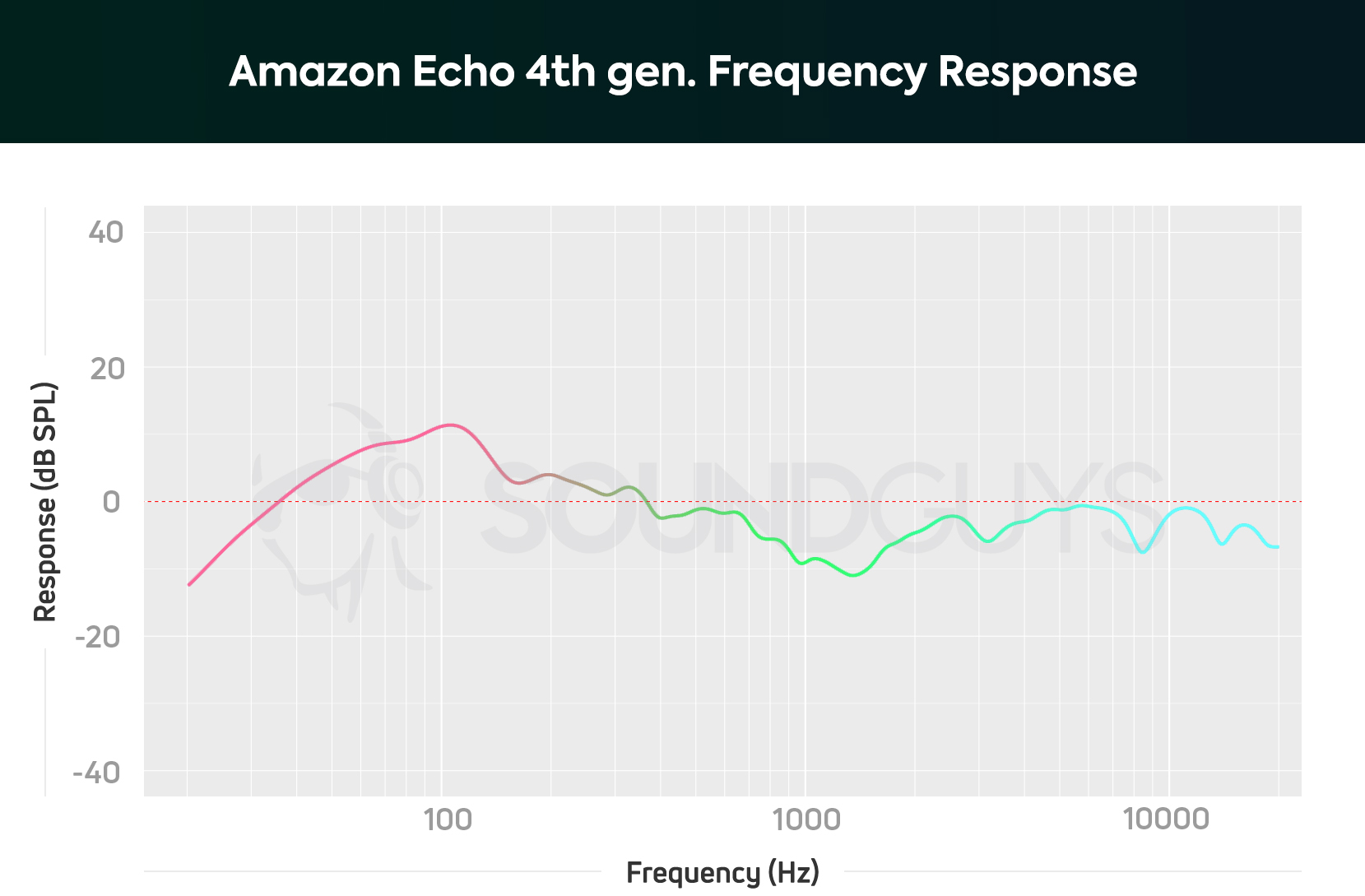
The low end is given a considerable boost in volume while the mids suffer a bit. You can see this if you look at the frequency response graph where there is a good amount of emphasis in the range of 40-100Hz. The rhythmic bass kicks throughout the song Bustelo by Ratatat are easy to follow, but they sound a little too strong for my taste. The extra emphasis makes the speaker sound bigger than it is, but that comes at the expense of the mids. There’s a pretty significant drop-off in the middle frequencies that make vocals sound less clear than on something like the Google Nest Audio.
This was somewhat noticeable in the song Can I Believe You by Fleet Foxes, where vocals sometimes sounded lower in volume than I’m typically used to when listening to the song on other speakers or in headphones. That under-emphasis extends to the highs as well. Highs never approach harshness even at loud volumes but cymbals and hi-hats don’t sound super clear as a result. You can hear them but a lot of the reverb that introduces a sense of space is cut off.
Hold up! Something’s missing:
This section features one of our old frequency response charts before we moved our office to Vancouver, Canada, and got cooking. We’re still ironing out our standardized speaker tests with the appropriate support equipment to update our testing and data collection. It will take a bit to get everything fleshed out, but we will update this review (and many others!) once we’re able with improved sound quality measurements and performance plots. These will be made evident by a new chart aesthetic.
Thank you for bearing with us, and we hope to see you again once we’ve sorted everything out.
How are the microphones on the Amazon Echo (4th Gen)?
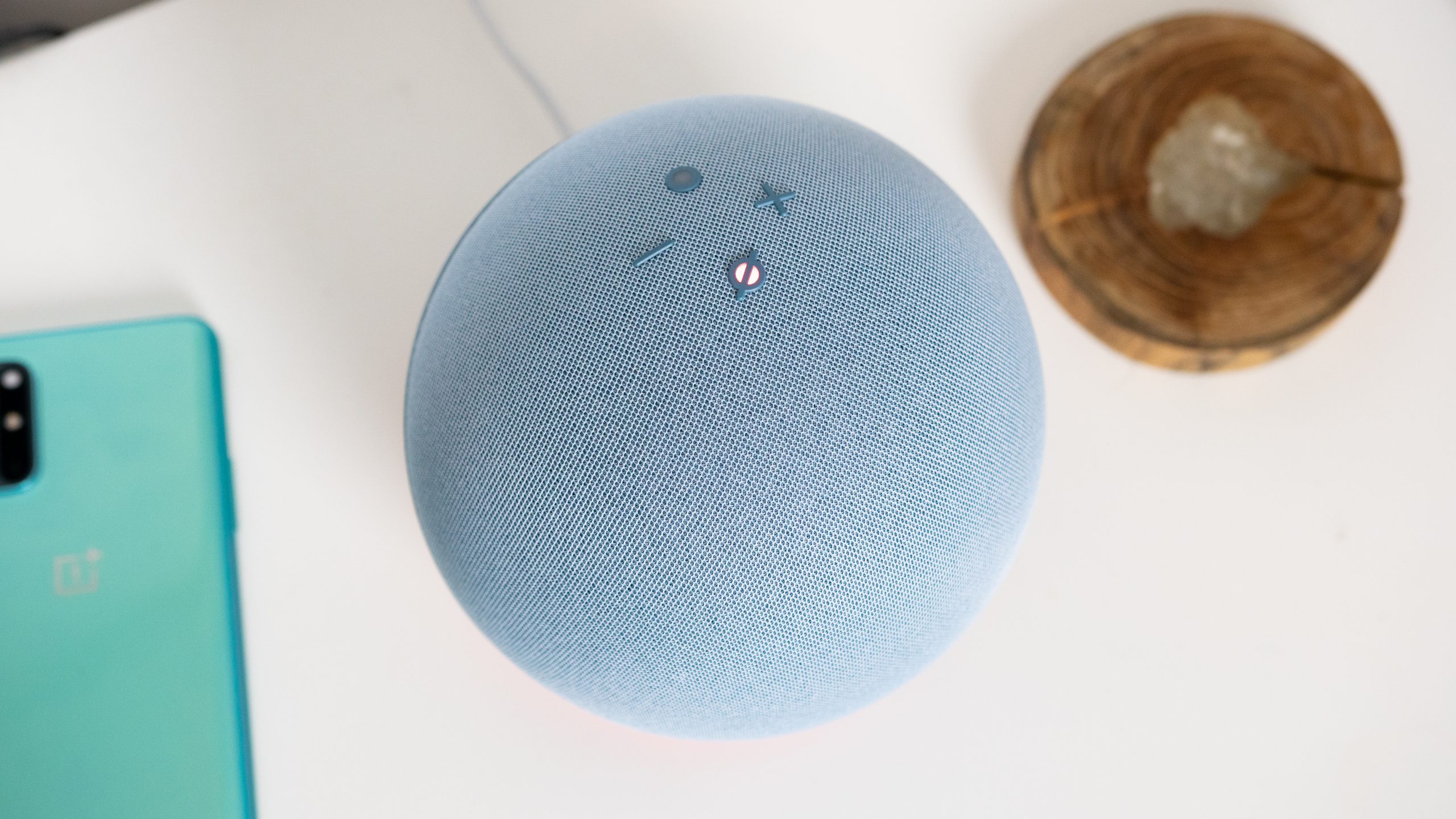
The microphones here are surprisingly good at picking up my voice even with music playing at relatively high volumes. Unfortunately, I don’t have any smart home gadgets to test it with but Alexa is fully compatible with plenty of services like Philips Hue lights and Amazon’s own Firestick.
Yes, you can use the hardware mute switch to disable the microphone. When you click it the microphone will turn off and the LED ring along the bottom of the speaker will glow red. While the microphone is muted you won’t be able to access Alexa even if you manually click the multifunction button, but you can still stream music to it via a smartphone.
Should you get the Amazon Echo (4th Gen)?
If you’re looking for a smart speaker that sounds good and gives you access to all of the devices compatible with Alexa, then yes, the Amazon Echo (4th Gen) is definitely a good choice. Not only does it look cool but it also sounds really good and won’t break the bank. It often goes on promotion too.

Most people will be happy with the extra bass response, especially when compared to something like the Google Nest Audio which has a less dramatic low end. As long you live (or plan to live) in an Amazon world with Firesticks and Alexa-compatible smart home devices sprinkled throughout your house, the Echo (4th Gen) is a great speaker. It does everything that people have come to expect from Amazon Echo speakers but with a new quirky design and better sound. Not bad for just $99 USD, and now just $59 USD for Prime Day.
However, there is a cost to smart speakers beyond what you pay at the sticker, and that cost is privacy. While many are all too eager to trade a few nebulous privacy concerns for some seriously useful features: it may not be the right call for you. Just be sure to know what you’re getting into if you’re not already hooked on the smart speaker life. We won’t judge you if you go ahead and grab one, but just be smart about your data privacy, okay?

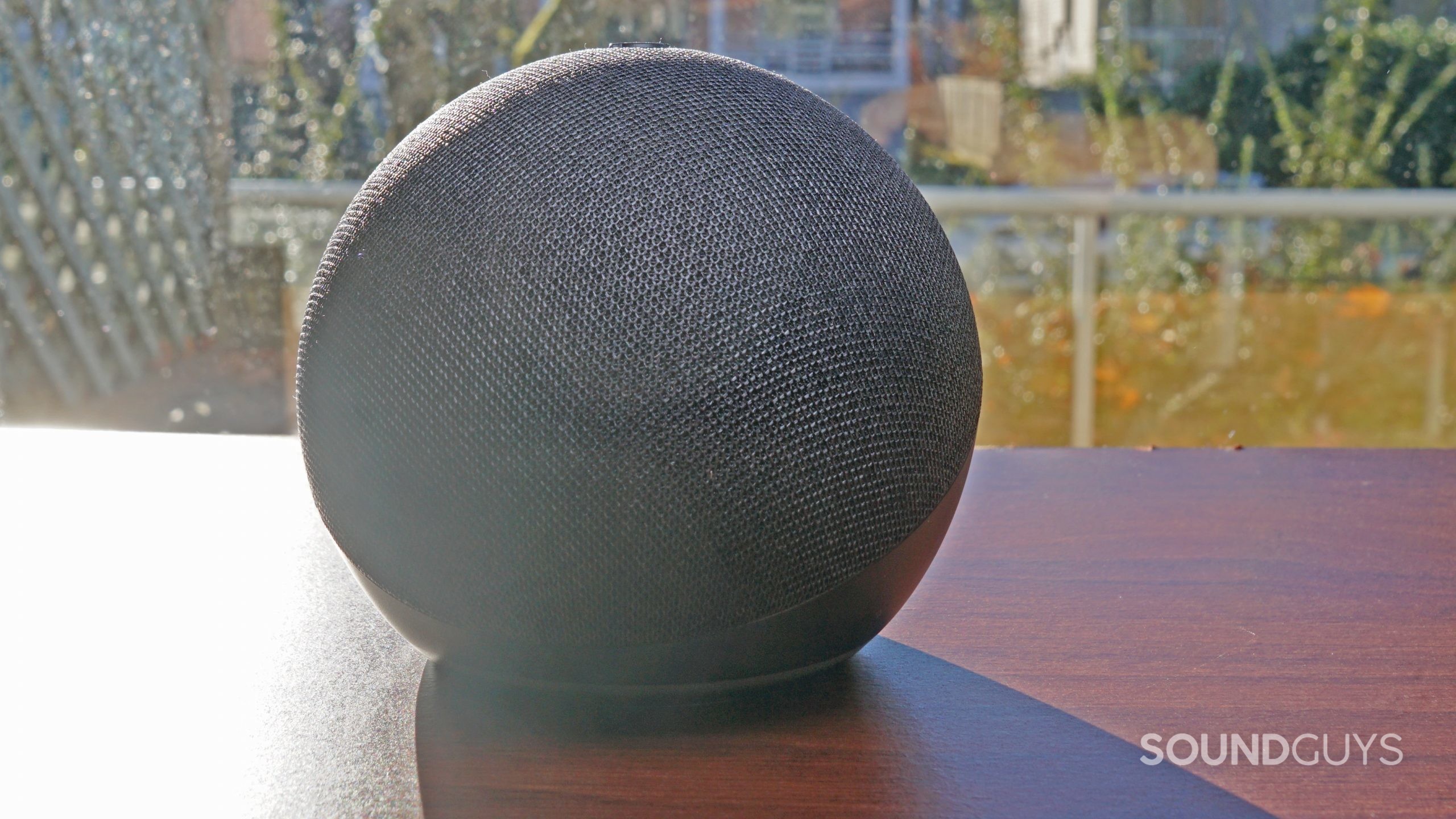
The regular Amazon Echo and Echo Dot product lines have been gotten more similar with each generation, and the newest Echo Dot is pretty hard to tell apart from the Amazon Echo (4th Gen). In fact, there’s almost no difference between these two products. The software side is identical, and there’s really only one meaningful difference to the hardware—the Echo Dot (5th Gen) lacks an aux input port. It is cheaper though, so if having a wired input method isn’t important to you, it may still be worth buying.

The Amazon Echo Pop was released in 2023 as a more affordable alternative to the Amazon Echo, $17.99 at Amazon. It’s smaller than the Amazon Echo, which means it is easier to fit in tight spaces. That said, the smaller size means it doesn’t get as loud and doesn’t produce as much bass.
What should you get instead of the Amazon Echo?
Alternatives at this price point aren’t exactly plentiful, and Amazon’s smart services are one of the most popular for things like smart home control. Anyone fully entrenched in the world of Apple hardware can grab the Apple HomePod mini for $99 USD. You get plenty of useful features like intercom functionality and multiroom playback, but many things are exclusive to Apple hardware (typical). There’s also the Google Nest Audio, as mentioned, and if you want an in-depth look at it versus the Echo, we’ve got a full comparison article for that.

If you’re looking for a step up, Amazon’s Echo Studio is the only real step up with the latest hardware. Double the price at around $200 USD; it’s a bit of a stretch but offers better sound quality. Another option might be the Sonos Move, but for that, you’ll have to shell out nearly $400 USD—though it does let you use both Amazon Alexa and Google Assistant.
An additional Sonos speaker that you might find worthy of consideration is the Sonos Roam. It’s cheaper than the Move at around $179 USD and it works both as a home Wi-Fi smart speaker plus a water- and dirt-resistant portable Bluetooth option, too. The Roam can be a bit of a hassle to get working for the first time, however.
Frequently asked questions about the Amazon Echo (4th Gen)
You can access a limited number of songs for free via Amazon Music through your Echo device. However, if you want the full capabilities of Amazon Music and access to its full library, you’ll have to buy a subscription. You can also hook up free Spotify to listen to on your Echo, though it won’t afford you the same capabilities that a Spotify Premium subscription would.
You unmute the microphone the same way that you mute it—by pressing the button on top of the speaker.
The Amazon Echo (4th Gen) doesn’t have a waterproof rating, so it won’t make for a good choice if you want to have an impromptu shower concert.
The current Amazon listing shows that you can choose from Charcoal, Glacier White, and Twilight Blue color options.